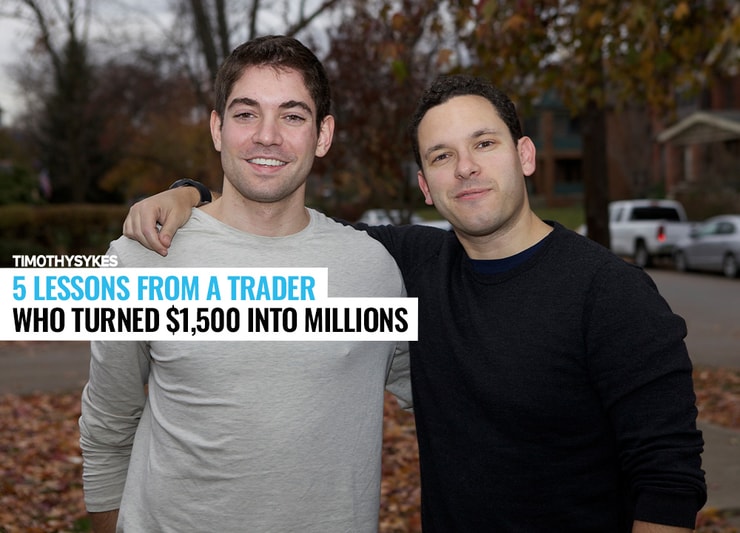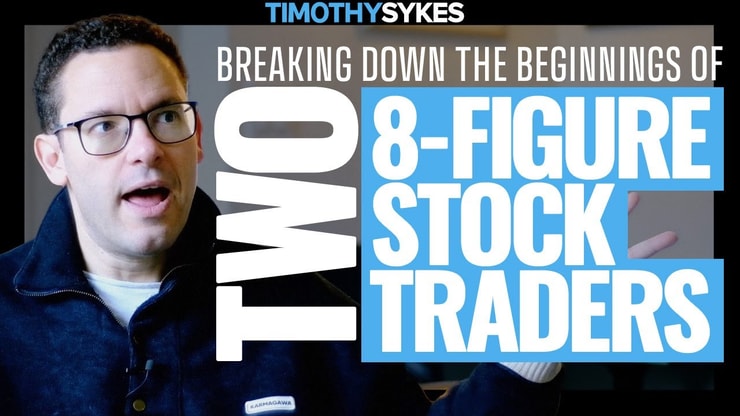Nearly ten years ago, CNN introduced us to Tim Grittani, a then-budding trader who transformed $1500 into over $1 million through penny stock trading…
And my second student to hit $1M in trading profits.

Today, as we mark the decade since that revelation, Grittani has catapulted himself into an even more elite circle, amassing 8-figures in trading profits.
This extraordinary journey from modest beginnings to monumental success isn’t just a tale of financial gain…
It’s a roadmap of invaluable lessons from Grittani’s experience, each a cornerstone in building a successful trading career, and exploring how these insights can empower your own trading journey.
Here are five of Tim’s greatest lessons on his way to 8-figures.
Table of Contents
Lesson #1: Embrace The Learning Curve

2025 Millionaire Media, LLCGrittani started with a small investment, emphasizing the need to focus on learning rather than immediate financial gains.
It’s critical you embrace the learning curve in trading, understanding that initial periods are more about gaining knowledge and experience than about earning significant profits.
It’s about being patient with one’s own development and understanding the complexities of the market.
Not only did Grittani embrace the learning curve, he was willing to accept early failures.
His initial setback, where he blew up his account, underscores the importance of resilience in the face of early failures. His commitment to learning and bouncing back highlights that initial setbacks are often a stepping stone to greater success in trading.
Lesson #2: Find Your Niche
This point remains crucial. Grittani’s success was partly due to identifying and focusing on penny stocks where he felt most comfortable and saw the most potential.
But how do you know if you’ve found your niche or not?
While most newbies just guess or trade what they see others trade…Grittani used a data-driven approach. By meticulously analyzing his trades, tracking patterns, and understanding market movements specifically in penny stocks, he was able to refine his strategies within this niche, leading to more informed and successful trading decisions.
More Breaking News
- Pacific Biosciences Sees Stock Surge After Latest Product Launch
- Strategic Collaboration with TAE Power Solutions Sparks Optimism for MARA
- Joby Aviation Stock Soars on Electric Wings
Lesson #3: Discipline and Patience
Discipline in waiting for the right trade setups and patience in executing them are critical. This involves resisting the temptation to trade impulsively and waiting for opportunities that align well with one’s strategy.
Moreover, Grittani Learned from early failures. His initial phase in trading, where he blew up his account, serves as a stark reminder of the consequences of impatience and lack of discipline.
This experience was pivotal in shaping his approach to trading, teaching him the importance of being disciplined about when to enter and exit trades and the need to be patient in waiting for the right opportunities.
Grittani’s journey illustrates that discipline and patience are not innate traits but skills developed through experience. By studying his early trades and understanding his mistakes, he refined his approach to be more disciplined and patient.
This process involved learning to recognize and wait for trade setups that matched his strategy and avoiding impulsive decisions based on momentary market movements or emotions.
Lesson #4: Risk Management and Accepting Losses
Learning to manage risk effectively and accepting losses as part of the process is vital.
This lesson focuses on the importance of a risk management strategy that includes setting stop-loss orders (whether that’s physical or mental) and knowing when to cut losses to prevent significant financial damage.
The number one rule I teach all my students is to cut losses quickly.
It took Grittani 9 months to become profitable. In order to survive the learning phase you must do your best to keep losses small.
As Grittani matured, got married, and became a father, his trading approach changed. He shifted more towards long positions and reduced short selling, indicating a change in risk tolerance due to personal life changes. This underlines the importance of aligning one’s trading strategy with personal circumstances and risk appetite.
Lesson #5: Adaptability and Market Sensitivity

2025 Millionaire Media, LLCIf you want success and longevity you must be willing to adapt.
Grittani’s transition from active trading to a more passive approach, partly due to family commitments, highlights the need for adaptability in a trading career.
He demonstrates how trading strategies can evolve over time in response to both market conditions and personal life changes.
In addition, he’s found himself relying on more technology to help him along the way. The use of algorithms and automated systems in his trading strategy shows how Grittani stays sensitive to market changes and open to new strategies and ideas.
🌟 Transform Your Trading Journey with the Power of AI – Join Our XGPT Live Training! 🌟

2025 Millionaire Media, LLCHave you been inspired by Tim Grittani’s extraordinary journey from $1,500 to 8-figure profits?
His story isn’t just about trading success; it’s a blueprint for mastering the market.
Grittani’s key lessons – embracing the learning curve, finding a niche, discipline, risk management, and adaptability – are vital for any trader aiming for the top.
But here’s the twist: What if you could amplify these lessons with cutting-edge AI technology?
That’s where our XGPT live training comes in. Imagine a tool that can enhance your learning curve, help you identify and master your niche, and bring discipline and precision to your trading decisions.
XGPT offers all this and more, providing you with an AI-driven edge in today’s volatile markets.
🚀 What You’ll Gain in Our Live Training:
- Learn How AI Can Transform Your Trading Strategy: Discover how AI tools like XGPT can analyze market trends, manage risks, and uncover hidden opportunities.
- Adaptability in the Digital Age: See how AI can help you stay ahead of market shifts and adapt your strategies in real-time.
- AI-Enhanced Risk Management: Learn how to implement advanced risk management techniques using AI, ensuring your trading journey is both profitable and sustainable.
Ready to Level Up Your Trading Game?
Join us in our upcoming live training sessions.
Dive deep into AI-enhanced trading strategies tailored for today’s dynamic market.
Witness real-time AI analysis in action, offering insights that could revolutionize how you trade.
🔥 Don’t just ride the market waves – learn to navigate them with AI precision.
Your journey to becoming an AI-savvy trader begins here. Embrace the future of trading with XGPT.












Leave a reply